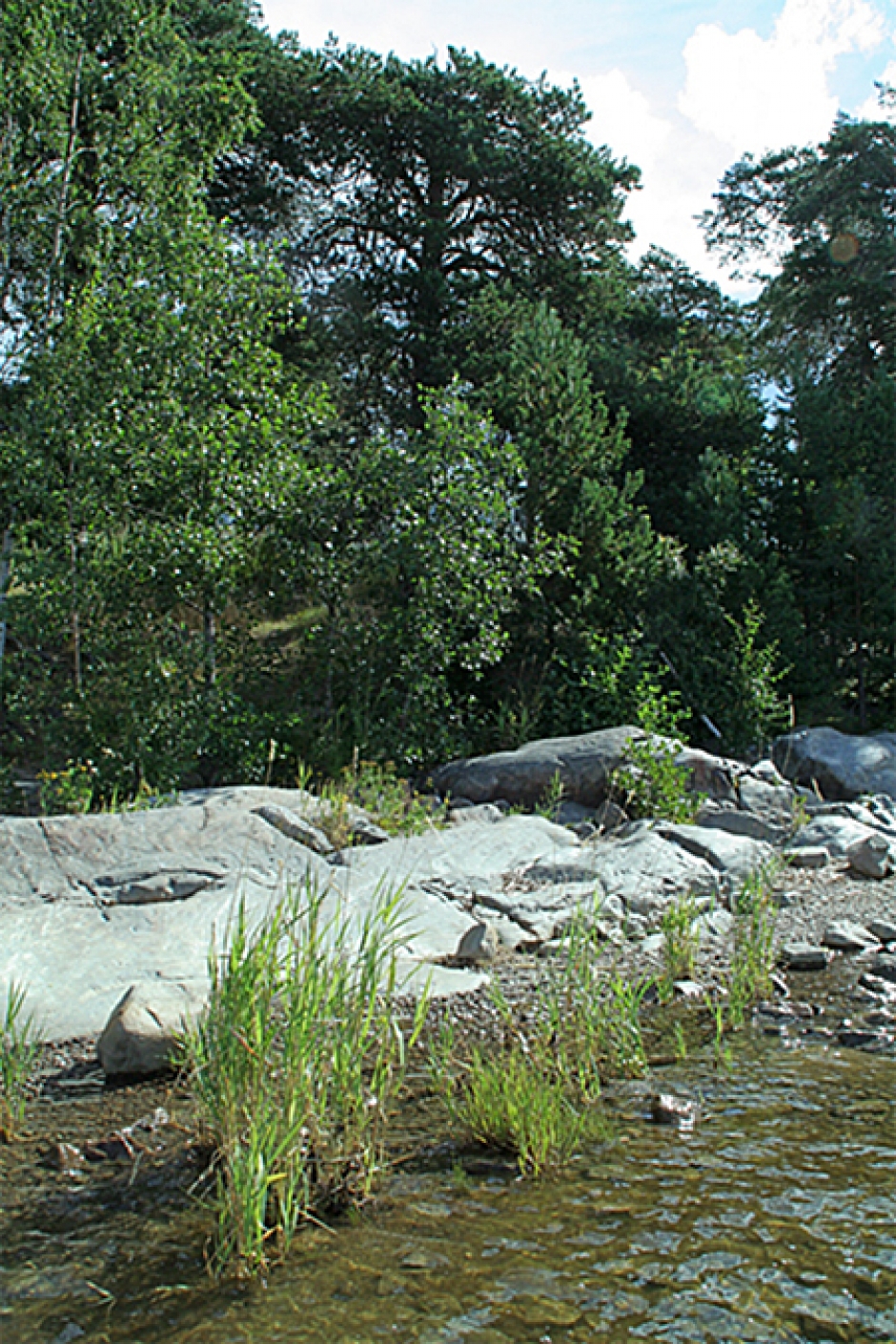Land uplift shores

The land uplift phenomenon is a distinguishing feature of the entire Ostrobothnian region but is most conspicuous in the Kvarken area. Shores that are allowed to develop naturally, without major human intervention, show clear characteristics of land uplift. This is most noticeable when observing existing vegetation unless the shoreline is dominated by reed. New land, previously ocean floor, is exposed as the shoreline moves further out. Among the first rooting in the new soil are plant species able to withstand higher salt concentrations and being periodically submerged, for example herbs and grasses. Hair grass, indigenous to the coasts of the Gulf of Bothnia, is one such species. Higher up on land, out of reach of sea water you will find bushes and deciduous trees, typically of species that are able to bind nitrogen, such as sea-buckthorn, alder and bog myrtle. Bush species include tansy, bunchberry and valerian. Other species of deciduous trees grow even further up on land, mainly rowan and birch but also bird cherry. The shade from these larger trees prevents sea-buckthorn from establishing itself, and the shrub is therefore only found in a thin band between the low waterfront vegetation and deciduous tree belt. Behind the deciduous tree-line you find coniferous trees. Thus vegetation forms various “belts” parallel to the shoreline. Bird species thriving along the shores are, for example, white wagtail and northern wheatear.
Attractive land uplift shores are located even nearby the Vaasa city center, along the waterfront promenade and in Vaskiluoto. These areas are appealing excursion sites from ice breakup to late autumn. Typical land uplift shores are also to be seen in the archipelago, while reed dominates the inner parts of the Eteläinen Kaupunginselkä bay.
